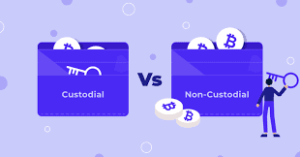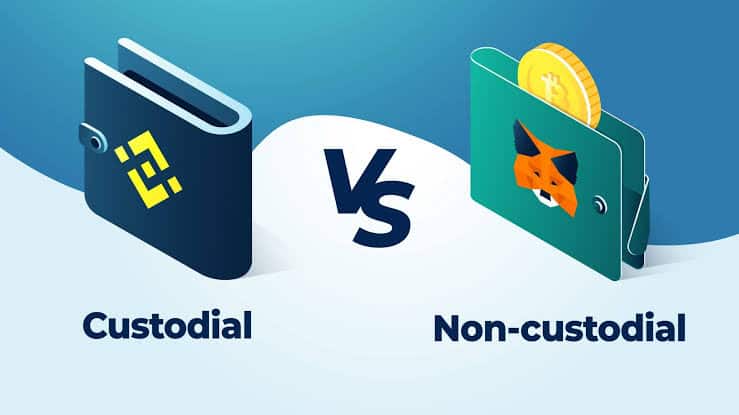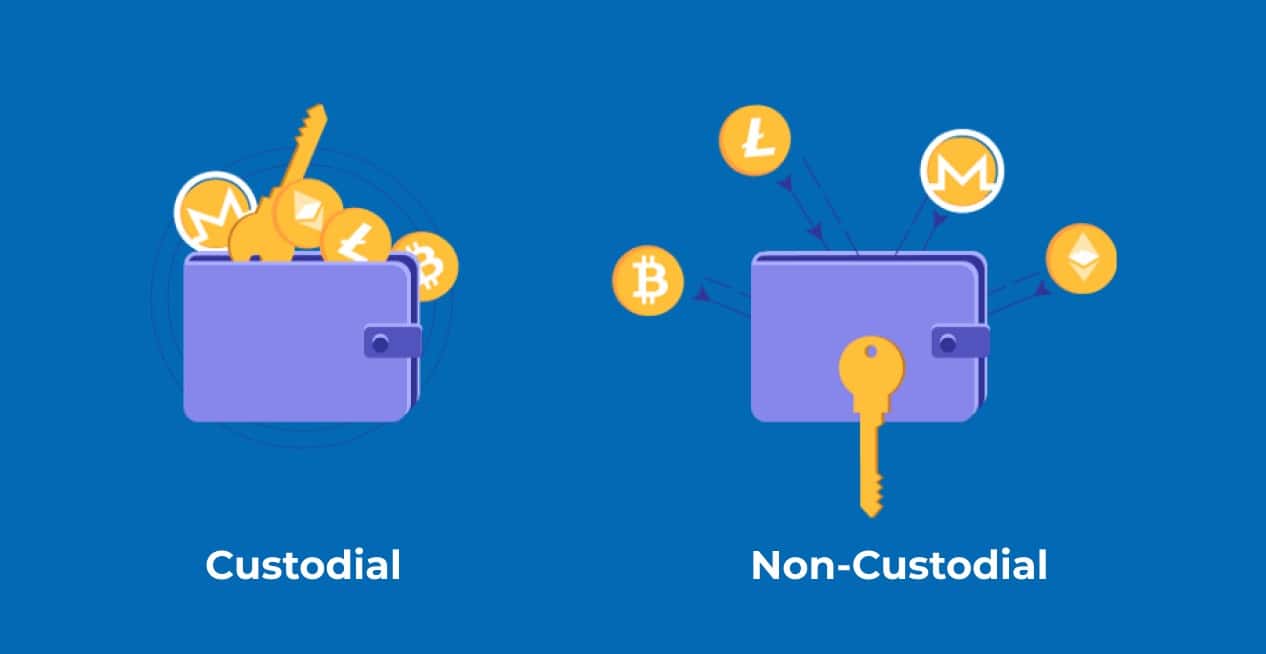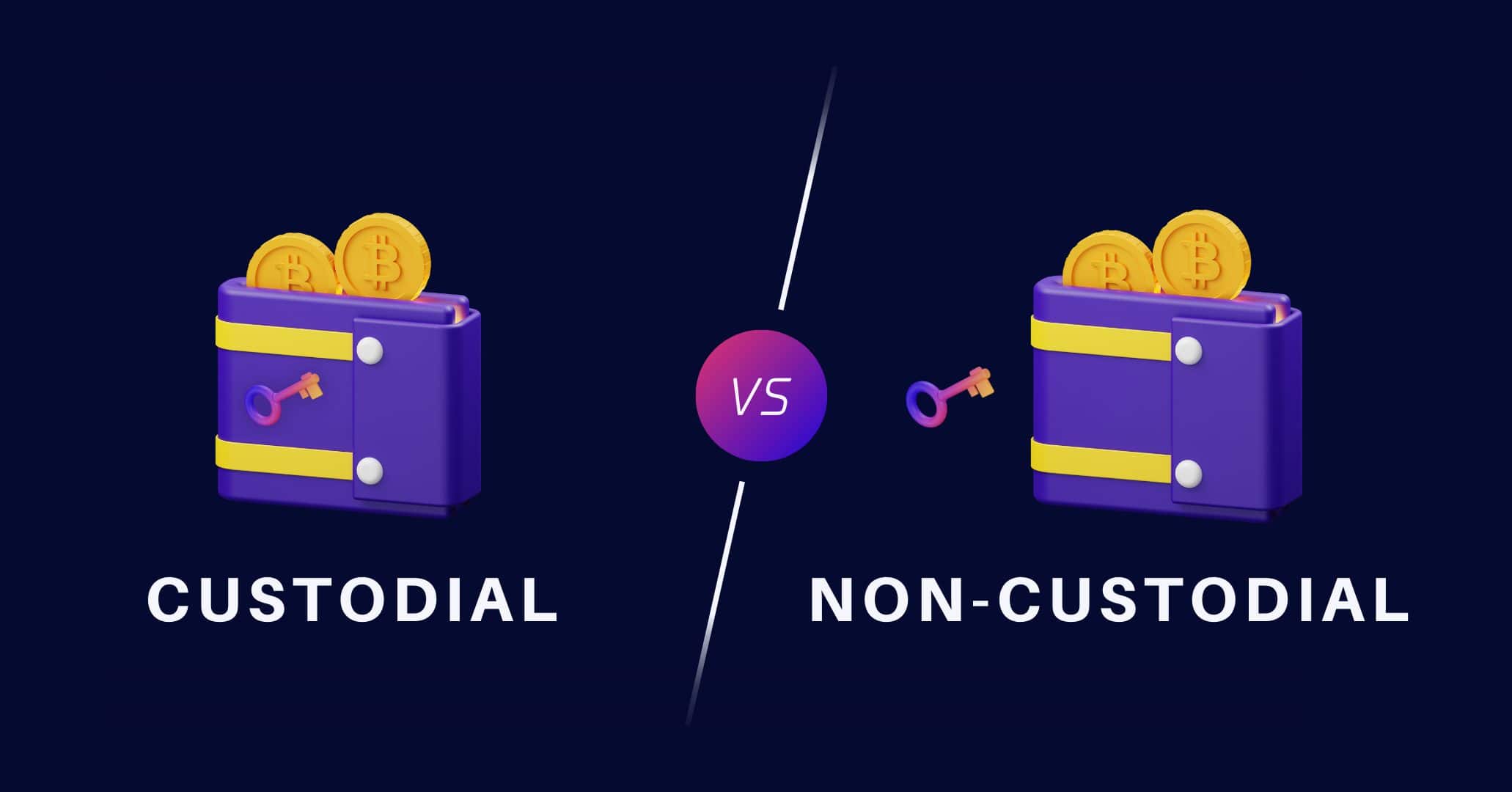Hey there, crypto buddies! Ready to dive into the world of wallets? If you’re scratching your head over custodial vs non-custodial wallets options, don’t sweat it. I’m here to clear up the confusion and show you the ropes on creating your digital safe. Think of this as your toolbox for keeping your crypto coins snug and secure. Stick with me, and you’ll be a wallet wizard in no time, knowing just how to pick and set up your crypto keeper. Let’s get to it—custodial or non-custodial, the power to choose is in your hands!
Understanding the Landscape: Custodial vs Non-Custodial Wallets
Defining Custodial and Non-Custodial Wallets
Think of a custodial wallet like a safe in a bank. With this type, the bank holds the keys. In crypto terms, the service holds your private keys. And non-custodial? That’s like a safe at home. Only you have the keys.
The Major Differences and How They Impact You
When you hear ‘custodial vs non-custodial wallets’, know it’s about who holds the keys. With custodial wallets, a service keeps your private keys. That means they manage and back up your funds. This comes with both ease and risks.
Non-custodial wallets give you the only set of keys. Think of it as being your own bank. You call the shots. You monitor every dime. But, you must also take on all the work of keeping your funds safe.
Let’s dive deeper into these types of cryptocurrency wallets.
Custodial wallets are often user-friendly. They’re your online wallets, providing quick access and support. But, imagine the service gets hacked. It’s like a burglar gets into the bank’s safe. This is where you could lose your stash. Wallet security here depends on the company’s defenses.
Now, think non-custodial. It’s all on you. You’ve got wallet software on a device or hardware wallets that are physical, like a USB drive. Or, go old school with paper wallets — keys on a piece of paper.
Which to choose? Look at your own routine. Do you like quick digital wallets with customer help? Or, do you want sole control and don’t mind the extra homework? That’s your wallet comparison.
With wallet security a top concern, you want to know your risks. Let’s say you go with an online or hardware wallet. What if you lose access or forget your keys? That’s the time when you’ll wish you’d chosen a service that can help you recover them.
Non-custodial options mean you must understand private key management and have wallet recovery options. No one but you can fix a lost key situation. Think about the things that matter most to you. Do you fear third-party risks? Is having total control a must?
Know too that hardware wallets, while more secure, can cost more. They also can’t beat the speed of transactions from online wallets. And paper wallets? They simply can’t compete with tech advances like blockchain and wallets improving together.
In creating a custodial wallet, it’s usually as simple as signing up for an account. You trust the wallet service to handle the rest. For a non-custodial wallet, you might download and set up the wallet software or write down keys from a paper wallet. Yes, it’s more steps, but you hold the reins.
Deciding between wallets is a big step. You’re choosing ease over effort, or full control over convenience. It’s about what feels safest to you, and fits your life best.
But don’t rush. Take your time to explore your options. Remember, this choice is the key to your crypto kingdom.
Setting Up Your Wallet: Steps to Creation and Management
How to Create a Custodial Wallet
Imagine a bank, but for your digital coins. That’s a custodial wallet! It’s like having someone else keep a close eye on your money. You trust a company to handle your coins and, in return, you just log in with a password to access them. Now, let’s set one up.
First, you pick a wallet service. Look at their security and reputation. Think of it as choosing the best guard for your treasure. Next, sign up. You’ll share some personal details. They need this to keep your account safe and play by the rules.
Then, set a strong password. Use a mix of letters, numbers, and special characters. Think of it as making a secret code that only you know. Lastly, often, you’ll turn on an extra step to check it’s you. It’s like having a special knock to enter a secret club.
You’re all set! Your coins are in a space that someone else takes care of. But remember, this power comes with trust. If the service gets hacked or goes down, your coins might be at risk.
How to Set Up a Non-Custodial Wallet
A non-custodial wallet gives you all the power. You’re the boss, and you call the shots. No middleman here, just you and your coins. Ready to be in charge? Let’s dive in.
Step one: pick your wallet type. Do you want an app or a piece of hardware? Each type has its perks. Apps are easy to use, while hardware is like a safe for your coins.
Now, download or buy your wallet. If it’s an app, head to the app store. For hardware, order one from a trusted maker. Then, it’s time to set it up. The wallet will make a new secret code, your private key. Write it down and hide it well. This is the master key to your coin kingdom!
After that, secure your wallet. Make a password that’s hard to guess. You’ll also want to back up your wallet. It’s like having a spare key to your car. If you lose your wallet, you’ll need this to get back in.
Last step: transfer your coins. You’re the one in charge of moving your money in. Once they’re in, keep your private key safe. If you lose it, there’s no getting your coins back. No one can help you, since only you have the key.
With great power comes great responsibility. You manage everything, which means top-notch security is all on you. If you’re ready for that, a non-custodial wallet can be your coin’s best friend.
So, what’ll it be? Someone else calling the shots, or you being the coin captain? Each wallet has its own path and perks. Think about what matters to you. Do you want full control or is convenience key? Your choice will lead the way to your perfect crypto keeper.
Weighing the Pros and Cons: A Comparative Analysis
Benefits and Drawbacks of Custodial Wallets
A custodial wallet, or an online wallet, is one where a third party, usually a wallet service, keeps your cryptocurrency for you. Let’s look at the highs and lows of using these types of cryptocurrency wallets.
Benefits: First, they’re easy to use. You just sign up, and the provider takes care of your private keys. Therefore, you don’t need to worry about losing private keys. Also, losing your password isn’t the end of the world. Since they take control of your keys, they can help with wallet recovery.
Drawbacks: On the downside, they come with third-party risks. Your digital assets are under someone else’s control. If the wallet service fails, gets hacked, or turns out to be fraudulent, you risk losing your assets. Also, custodial wallets often carry wallet transaction fees that non-custodial wallets don’t have.
Advantages and Disadvantages of Non-Custodial Wallets
Now, let’s turn our attention to non-custodial wallets. These include hardware wallets and paper wallets, where you have full control over your private keys.
Advantages: The main benefit is control. You are the only one with access to your funds and your private keys. This makes them more secure than custodial wallets. Plus, with non-custodial wallets, you can opt for hot or cold storage. Speaking of cold storage, hardware and paper wallets are less exposed to cyber threats.

Disadvantages: The flip side, though, is that if you lose your private keys, they’re gone forever. Wallet recovery options are limited. The management of private keys also calls for good tech knowledge. Creating a non-custodial wallet can be more complex as well. On top of that, many non-custodial wallets lack the user-friendly interfaces of their custodial counterparts.
When considering custodial vs non-custodial wallets, a key factor is the level of trust you need from your service provider. The security of your cryptocurrency also depends largely on your understanding of wallet software. You need to weigh the risks, costs, and convenience to make an informed decision.
Wallet comparison is critical in this process, and it’s also helpful to be on top of the evolving landscape of blockchain and wallets. With a better understanding of the features, benefits, and drawbacks of different wallets, you are better equipped to maintain control over your funds.
Advanced Wallet Security and Risk Management
Private Key Management and Wallet Recovery Techniques
Think of private keys like the keys to your safe. Only they open your digital vault. So, losing them means saying bye to your crypto. Scary, right? Just like you wouldn’t toss the keys to your home in the street, you need to guard your private keys! No one should get their hands on them. It’s rule number one in wallet security; never share your private keys.
But what if you lose them? That’s where wallet recovery comes in. Most digital wallets ask you to write down a recovery phrase when you set up. This phrase, usually 12 to 24 words long, is your lifeline. If your device takes a swim or says adios, that phrase is your ticket back in. It’s like having a backup key. But remember, keep it super safe too. If somebody else finds it, they can get into your treasure trove.
Creating both custodial and non-custodial wallets involves these key steps. For a custodial wallet, you entrust a company with your keys. You just sign up online, like making an email account. Then, for non-custodial wallets, you take charge. You’ll download software or buy a physical device, like a USB, and keep your keys to yourself. No middleman. This way, you call the shots on your wealth.
Evaluating Insurance Options and Understanding Wallet Services
When you store your coins, think: “Am I covered if something goes wrong?” With custodial wallets, the provider might offer insurance. This means if they mess up, you might not lose it all. Some online wallets out there promise to guard your coins like Fort Knox. Others, well, not so much. That’s why you need to dig deep. Read up on them, ask around, and make sure they’re not just talk.
Non-custodial wallet users, listen up. You’re on your own; no safety net. But that’s not to say “tough luck” if trouble hits. Some clever services can help. Think of wallets with built-in recovery options or even third-party insurance for purchase. They give you a cushion if you drop the ball.
But here’s the deal. Nothing beats being careful yourself. So, what’s better? It’s your call. Custodial wallets are easy but carry third-party risks and less control. Non-custodial wallets put you in the driver’s seat, but with all responsibility on your shoulders.
Understanding wallet services is crucial. Some charge you an arm and leg just to move your crypto. Others are like a cool friend who asks for little. It’s all about what you want, and what you’re willing to pay or do. The trick is to weigh all this against how tight you want your ship to be. And remember, blockchain waits for no one. The rules today might not play tomorrow. So keep sharp, stay updated, and choose wisely. Your crypto future depends on it.
In this post, we explored the world of digital wallets, breaking down custodial and non-custodial types, their uses, and security features. You’ve learned the key differences between them and how each impacts your control and safety. We walked through the steps to set up both wallets and discussed the pros and cons to help you choose the right one for you.
I believe being informed helps you make smart choices for your digital assets. Whether you value ease of use or total control, there’s a wallet that fits your needs. Remember, with great power comes great responsibility—especially when managing your private keys and security. Choose wisely, and stay safe in your digital transactions!
Follow Crypto Currency Bitcoin to update more knowledge about Crypto
Q&A :
1. What is the difference between custodial and non-custodial wallets?
In the world of digital currencies, the key distinction between custodial and non-custodial wallets pertains to who controls the private keys of the wallet. A custodial wallet is a type of wallet where the private keys are controlled by a third-party. On the other hand, a non-custodial wallet gives the user full control over their private keys.
2. How to create a custodial wallet?
Creating a custodial wallet typically requires registering with a service that offers this type of wallets. It’s as easy as setting up an account with the provider, and they take care of the rest. However, remember that by opting for a custodial wallet, you are trusting the third-party service to handle your assets securely.
3. How to make a non-custodial wallet?
To make a non-custodial wallet, you’ll need a wallet application that enables you to control your private keys. You can download such applications from trusted sources, then follow the individual set-up process. Note that the security of a non-custodial wallet depends largely on how well you protect your private keys.
4. What are the pros and cons of custodial vs non-custodial wallets?
Custodial wallets have the advantage of easy recovery in case you lose your login details, as the third-party service can assist you. However, they are considered less secure as they can be targeted by hackers. Non-custodial wallets offer more security, as the private keys are only in your control. Yet, if you lose your keys, there’s no way to recover your digital assets.
5. Which one should I choose – custodial or non-custodial wallet?
The choice between a custodial and non-custodial wallet depends on your personal preference and understanding of digital asset management. If you prefer simplicity and are confident in the security protocol of the custodial service provider, a custodial wallet might be for you. If you prioritize the security above all and are capable of managing your private keys, then a non-custodial wallet may be the ideal choice.
